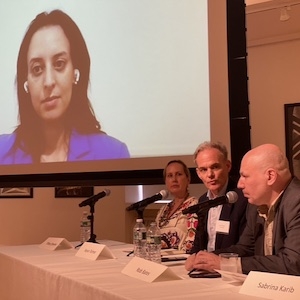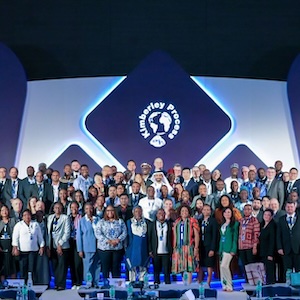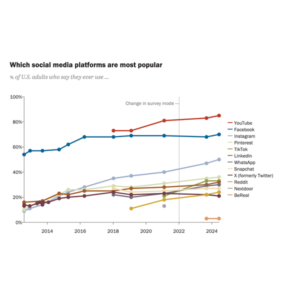
A lot of companies use the term recycled gold in ways that oversell the product’s true environmental impact, panelists agreed during a session on gold sourcing at the Initiatives in Art and Culture’s recent Gold & Diamond Conference.
“Many brands talk about how recycled gold is ‘green’ and how it has a lower carbon footprint,” said Sabrina Karib, founder of the Precious Metals Impact Forum (PMIF). “That runs the risk of greenwashing.
“In the consumer mind, recycled signifies ‘green’ or something that avoids extraction. Recycled gold does not reduce mining. In terms of volume, it doesn’t change anything.”
Karib said that while recycled gold has numerous definitions, a PMIF-convened multi-stakeholder group decided it should be framed more narrowly: It should apply only to products that have less than 2% gold (by weight) and are made from gold that would otherwise be discarded—such as electronics. Gold from melted jewelry that is now regularly called recycled should instead be dubbed reprocessed.
The Jewelers Vigilance Committee (JVC) recently asked the Federal Trade Commission to disallow use of term recycled gold for jewelry products, said panelist Tiffany Stevens, JVC’s president and CEO. “Most of our members feel the term is very confusing for the consumer,” she said, noting that under the current FTC regulations, something is considered recycled only if it’s “recovered from the waste stream.”
“No one’s throwing gold in the trash,” Stevens said. “We’re in a difficult, if not impossible, situation in our industry, which is why we need a new definition. Right now it’s impossible for us to qualify.”
Kevin Telmer, executive director of the Artisanal Gold Council, said that about 20% of the world’s gold supply is mined by artisanal or small-scale miners, but their product is currently excluded from “responsible” supply chains.
“Those people are the most vulnerable, the most needy. There’s a few bad actors that the media loves to focus on, but 99% of them are just good, hardworking people.”
There is, however, a trend toward gold brands built around responsibly sourced, artisanally mined gold, and prestigious jewelry companies like Chopard, Cartier, and Breitling are starting to use them, said Olivier Demierre, president of the Swiss Better Gold Association.
“Have they been burned, or have they experienced difficulties because of that?” he asked. “No. Just the opposite.”
While John Mulligan, director of market relations and climate change lead for the World Gold Council, said these products can have a positive impact, he cautioned they represent a minor portion of supply. “[They] absolutely are contributing to progress, but they are doing it at the edges, at a very small scale,” he said. “Swiss Better Gold produces four tons [of artisanal/small-scale gold]. The U.S. jewelry industry uses 150 tons. The global jewelry industry uses 1,800 tons.
“One of the great challenges is how to support structural change,” said Mulligan. “For all the great work that these niche vertical supply chains do, you need to have an impact on the mainstream.”
On another gold-related topic, in light of the recent U.S. government’s recent warning that West African gold was funding Russian paramilitary outfit the Wagner Group, Stevens reminded attendees they need to set up an anti-money-laundering program, and regularly test it.
But Charlie Betts, managing director of the Betts Group, which offers “single mine origin” gold, argued brands shouldn’t disengage from problematic areas. “You get that release from the State Department, the easy answer is to avoid those regions, and we think that’s exactly the wrong thing to do. With single mine origin, we deliberately and specifically source gold from West Africa. Because that is where you can have the greatest impact.”
Betts said sourcing your gold from a single producer allows a company to better control its supply chain and engage directly with the vendor. “There are some incredibly progressive large-scale miners which go about their operations in the right way and have an unbelievable social and economic impact,” he said. ‘They can change a whole region in a way small-scale projects can’t.”
“Mining is not sustainable,” he added. “But what can be sustainable is how a region can be transformed when the mine is finished.”
The panel, held July 18 at Bohemian National Hall in New York City, was co-moderated by Initiatives in Art and Culture president Lisa Koenigsberg and the author of this article.
Top: Sabrina Karib (on screen) participates in the gold panel with (from left) Tiffany Stevens, Kevin Telmer, and JCK‘s Rob Bates. (Photo by and courtesy of Cristina Villegas)
Follow JCK on Instagram: @jckmagazineFollow JCK on Twitter: @jckmagazine
Follow JCK on Facebook: @jckmagazine







